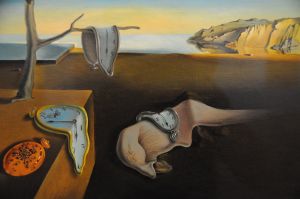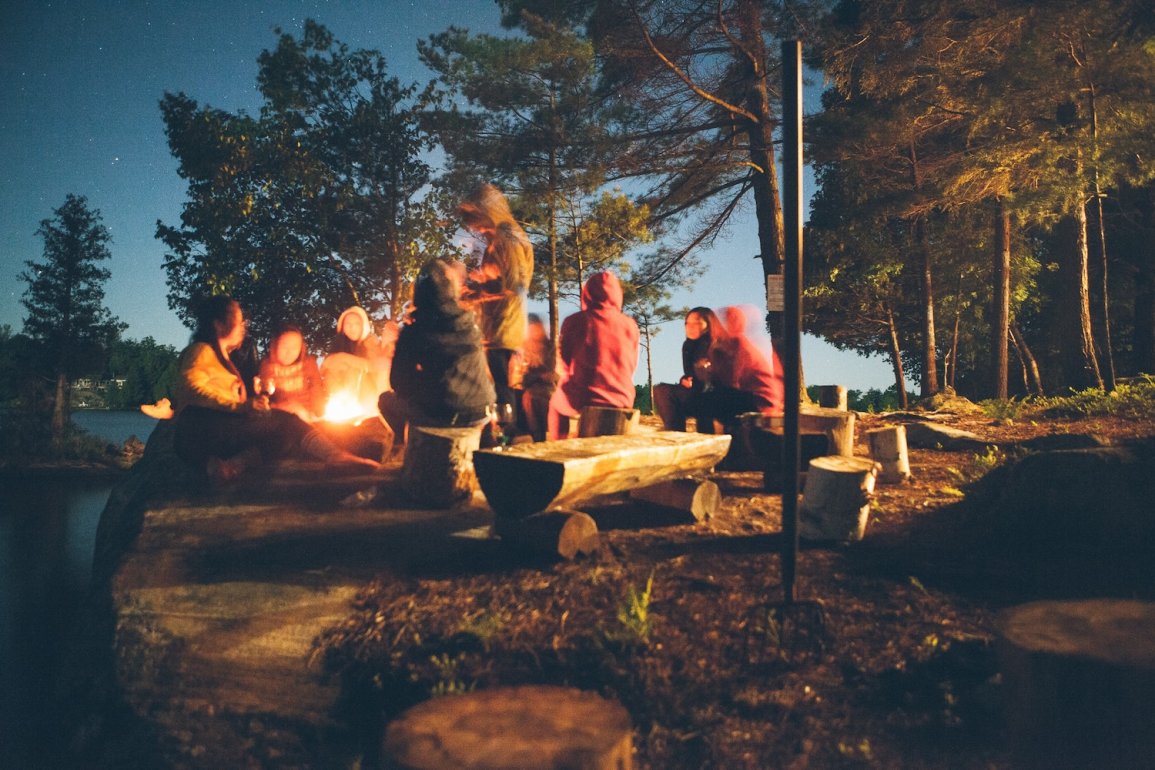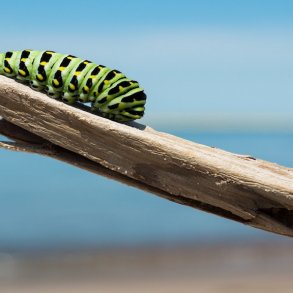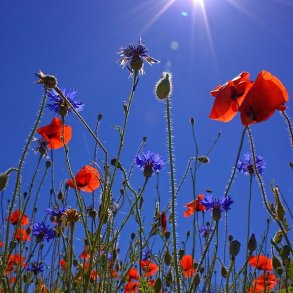By George Pór and originally published at campusco-evolve.org.
The wisdom of the ancient ones
Our story started way back. The first people of all continents inhabited their natural surroundings with the mixed emotions of gratitude for the nourishment and trepidation about the coming thunderstorm. Nature was a formidable friend and foe.
When man-made or natural dangers threatened their habitat, the circle of elders gathered around the campfire in the center of the village, listened, spoke, and listened more, until the wisdom of the circle appeared to all. Then they stood up, knowing what to do next.
Fast-forward 10,000 years. The planetary habitat of the human family is in danger. The social organization of the species is not prepared to meet its towering challenges. “The world is going to change so fast that people and governments will not be prepared to be stewards of change. What will save them is teaching-learning communities…” — Margaret Mead
Where will the talents and competences for facilitating the massive transformations needed in our thinking, relationships, and systems, come from? How will those teaching-learning communities be formed? Those were the questions that kept working on a group of friends, gathering around the electronic campfire of their global village.
Slowly, the image of a virtual campus emerged as a space, where facilitators of the profound changes needed for our survival come to learn, gain experience, share the triumphs and tribulations of their journey, and form communities of practice.
The birth of Campus Co-Evolve
Acts followed the vision, and in March 2019 the Campus opened its doors with its first gift to changemakers around the world, the Four Rivers course. The course’s mandala became emblematic to the teaching-learning philosophy of the Campus; the interconnected A-B-C-D rivers became a symbol of its holistic educational framework rooted in Integral theory.
The Four Rivers mandala with the interplay of being and becoming in its center
The 4R course, just as our other programs, included live sessions via video conferencing with break-out rooms for small group exchanges, online forums, chats, a knowledge repository, a virtual café, a virtual Story Circle and other co-creation spaces.
Undoubtedly, one of the course’s most popular features was the “reversed classroom,” in which the practitioner-participants became teachers to each other and the faculty became the facilitator of their learning. In preparation to that, they all partook in small-group assignments, then presented their findings in the online session.
To join the first cohort of the course, change practitioners came from China, Germany, Russia, Switzerland, UK, and US. Given its popularity, as reflected in some of its alumni’s testimonials, we included a second edition of the course in the program of the Fall 2019 semester.
The cover of the notebook used in the Campus’ first 5-day residential session.
What is emerging
Like a newborn, the Campus is learning fast in multiple domains. We are engaged in absorbing the best that evolutionary andragogy, rhizomatic learning, connectivism, personal knowledge mastery and other disciplines of adult education can offer us.
We do that in conversation with the social fields of transformation and the practitioners, who move the action there. Concurrently, we’re also enacting the institution-building tasks of getting our courses credentialed, securing funding, attracting thought leaders faculty, and last but not least, developing or self-management practices and social enterprise structure.
What support the coherence of this multi-branch developmental work is our innovation architecture:
Source: the “Community Intelligence” Innovation Architecture
The four blades represent the knowledge/learning innovation expressed by our educational credo, the social innovations of self-management applied to higher education and creating a Co-evolution Ambassadors Network, the tech innovation of our distinctive integration of various synchronous and asynchronous communication and collaboration tools, and the business innovation of providing high-quality educational programs in the gift economy. When the blades start turning, a vortex of transcontextual innovation is unleashed.
We are a work in progress, individually and collectively, as the Campus community. What will emerge from this accelerated multi-dimensional and transcontextual learning is unpredictable, pregnant with surprises. The seed that dropped in the soil started germinating by now but what it will become… only appears in the dreams of the sprout.
What time is it?
The Emerging Planetary Reality is challenging us with its crazy-making times. Looked at from one eye, it seems that everything is getting better and better. For example, we’re witnessing unprecedented leaps in scientific and technological developments. As a consequence, average lifespan expands so that those born today may live 150 even 200 years and stay healthy for most of that time if they care about their lifestyle.

When we look at what time it is from the other eye, we see refugee crises that are not going away, acts of mass violence and terrorism, increasing polarization of society, the continuing disappearance of many species from life’s diversity, and a slow-motion Holocaust of the soul through lives spent in wage slavery and meaning-deprived work, which management-speak endearingly calls “employee disengagement.”
Just as nature was for our ancestors, robotics and artificial intelligence can become humanity’s friend or foe. As Kai-Fu Lee, one of the world’s leading AI researchers and entrepreneurs said, “The coming AI revolution will bring about either the best of times or the worst of times.”
That revolution can emancipate us from necessity and usher in an era of abundance for all. Or, it can lead to massive unemployment and “Big brother”-style behavior control, under the expanding powers of surveillance capitalism.
Which way shall we go? It’s a race against time. Presently, a key factor in that race, the evolution of consciousness is lagging dangerously behind progress in other areas. The good news is that but more and more of us are awakening to the dangers of that chasm and started seeking each other, knowing that only together can we pass through this.
As Pierre Teilhard de Chardin once said, “There is almost a sensual longing for communion with others who have a large vision. The immense fulfillment of the friendship between those engaged in furthering the evolution of consciousness has a quality impossible to describe.”
So, are we rushing towards a civilizational breakdown or breakthrough? What will prevail at the end of the day? Will it be the things that get better and better or those that get worse and worse?
The scary and exhilarating answer is that it’s up to us. Isolated, we may feel insignificant and not having the capacity to affect real change. Our strength is in turning to one another and learning together what it takes to boost our individual and collective competences as changemakers.
That’s why Campus Co-Evolve is pursuing this evolutionary purpose:
To cultivate a global network of changemakers
and their communities of practice,
supported by state-of-the-art electronic, social, and inner technologies,
triggering a viral wave of new capabilities for facilitating transformation at all scales.
On the horizon
Our purpose is not an agenda to accomplish but a future that exerts its “Power of Pull” on us. How can we respond wisely to that pull? We take clues from the subtitle of that very same book by John Hagel and his colleagues: “Small moves, smartly made, big impact.” Another source of our inspiration is another seminal book, “Small Arcs of Larger Circles: Framing Through Other Patterns,” by Nora Bateson.
What will be our smartly made small moves that can have the big impact we’re aiming for? How can we discover the larger circle of which our moves today will be the small arcs?
To address that question, we look at the horizon. What are the other patterns emerging through which we can frame those question? In other words, what else can Campus Co-Evolve also be, given the direction into which we are pulled by our purpose, as well as the talents and aspirations of our people?
A 21st Century institution of higher education cannot embody the unity of teaching/learning and social impact without also being a place of trailblazing research. It is even more so in our crazy-making times, when our decentralized collective intelligence needs many well-functioning collective sensing organs.
One of those organs will be the Campus’ Center of Research for Civilizational Renewal (CRCR). It will be a home of Generative Action Research, a methodology outlined here (2014) and here (2017), which brings together faculty, researchers, and practitioners in the shared concern for addressing societal challenges and advancing transdisciplinary knowledge related to them.
Depending on funding, the initial the research projects may include (a constellation of) the following directions that George Pór, the Dean of Campus Co-Evolve, has already been engaged in for various length of time from 1 to 30 years.
• Confluence of Streams — an experiment in facilitating “transcontextual, mutual learning” (à la Nora Bateson) among some of the streams that are listed here
• Go Vertical Together — an action-research practice group focused on the vertical development, which grew out from our Cohort 1
• Evolutionary Andragogy — with an initial focus on rhizomatic learning sketched out in “Rhizomatic education: community as curriculum” section here
• Collective Awakening — using emergence for having wisdom initiatives scale across, and our Generative Action Research for its methodology
• Unfettering the Emancipatory Potential of AI & Blockchain — building on this keynote delivered at the Knowledge Management in Asia Pacific conference, in Hangzhou, Nov. 2018
The pinnacle of the CRCR vision is transdisciplinary collaboration across the research teams, which will call for a mix of public and private sector sponsors. The build-up to it will be organic, driven by the interest in our vision, the responses we’re gathering the research community and prospective funders.
Another development for 2020 already under way is turning the Campus into the convener of the CoEvolution Platform, a multi-sided, “learning platform” (John Hagel) business, where we’ll galvanize the ecosystem of seekers and various providers of transformative education. This entrepreneurial start-up initiative grew out from a group project of the Campus’ Cohort 1 and using the “Platform Design Toolkit” methodology.
In 2020, or maybe even before, we’ll also see the coming alive of Campus Co-Evolve, China, the first in the network of the Campus’ local hubs. That network will turn our global virtual university into a “glocal” one, enabling local educators to consult global resources and adapt them for local use. It will also facilitate the spreading of practices worth replicating across the local hubs, thus giving Campus Co-Evolve, a deeper meaning. We’re thrilled by our anticipation of the ways our China hub may contribute to better cross-cultural understanding and development between China and the rest of the world.
This story doesn’t end here
This story doesn’t end here because we know how tall the challenges in the coming years and decades will be. We will welcome and choose to engage with them because that’s how we can evolve. But we can’t do that without you all because, in a sense, there’s no evolution, only co-evolution. Let’s explore what that may mean in practice.
Would you want to co-create one of our courses? Here is a way to it. Why not enroll in one of the courses that will open in October so that you can get intimately acquainted with our educational credo in action, the affordances of our platform, our Faculty and Enabling circles, besides meeting your course-specific learning objectives. Since each course is shaped by its Cohort, you’ll have plenty of opportunities to contribute to its co-creation.
Would you like to brighten the fledgling co-evolution movement, by helping to spread new capabilities for facilitating deep transformation in the world faster? Why not join CAN, the Co-evolution Ambassadors Network and develop fun and innovative ways with the other Ambassadors for letting the news of the Campus reach all who could benefit from our work.
Do you have a knack for public relation work or video production and editing? We want to hear from you because those areas are essential to expanding our reach and you’d have a chance to join other talented “attraction magnetizers” in our network.
Are you a progressive philanthropist or an impact investor, seeking to have your funds reach a truly high evolutionary payoff? Why not consider investing in amplifying the positive impact of evolutionary change leaders and facilitators by investing in their full-spectrum capability development?
Are there any other ideas popping into your mind when you think about how working with us could support your own purpose in life and work? We would love to hear from you about those ideas!
What you’ve just read reflects the baby steps of Campus Co-Evolve. (We are only 6-months old.) We want to write the next chapter of Our Story with you. If anything in the story so far resonates in your heart, let’s start our co-evolution now. Write to us.
Republished with permission.
Enlivening Edge is happy to be an affiliate of Campus Co-Evolve. To learn more about upcoming courses, check here.
Featured Image Photo by Tegan Mierle on Unsplash




